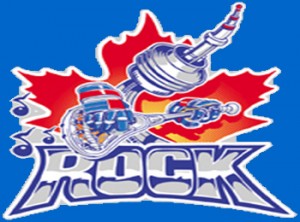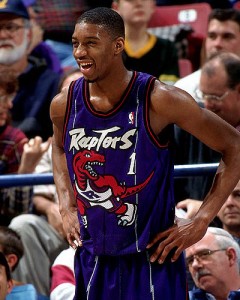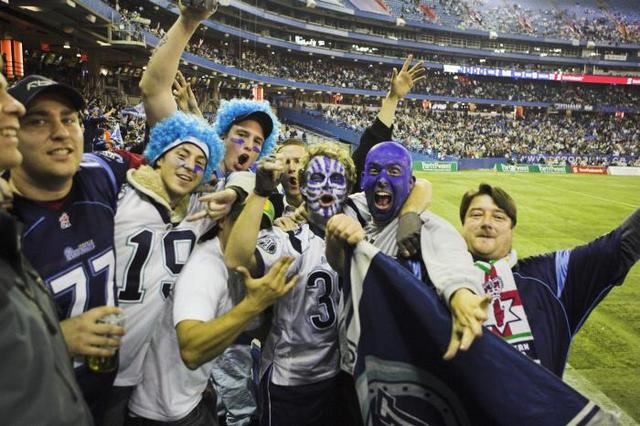What is the best team in Toronto?
 Toronto sports fans are lucky – they live in one of the few cities in North America to have a professional sports team in all four major leagues.
Toronto sports fans are lucky – they live in one of the few cities in North America to have a professional sports team in all four major leagues.
Well, okay, there isn’t really a National Football League team here, but the Buffalo Bills play two games a season at the Rogers Centre and there are the Toronto Argonauts, historically the Canadian Football League’s most successful team. Football is definitely covered in Canada's largest city.
But I digress. Toronto has eight professional sports teams, on a par with, or better than, the 14 American cities that have teams in the NFL, National Basketball Association, Major League Baseball and the National Hockey League.
Unfortunately, this creates a weird competition amongst the teams as they vie for fans attention. I was reminded of this weeks ago when a friend of mine from senior school posted on Facebook “So glad the Leafs suck more than the Raps. At least the Raps have upside”.
Of course, this was before the Raptors embarked on a Cavaliers-esque 13-game losing streak, but the comment got me wondering: what is the best team in Toronto? Which team does the best job of representing a city spoiled for choice?
Here are all of the city’s professional sports franchises, in order of winning percentage over the past two years.
| Team | This season | Last season | Cumulative |
| Rock | .667 (4-2)* | .562 (9-7)† | .615 |
| Blue Jays | .525 (85-77) | .463 (75-87) | .494 |
| Marlies | .470 (24-20-7)* | .413 (33-35-12) | .442 |
| Nationals‡ | .250 (3-9) | .583 (7-9) †¥ | .417 |
| Maple Leafs | .426 (23-26-5)* | .366 (30-38-14) | .396 |
| Raptors | .269 (14-38)* | .488 (40-42) | .379 |
| Argonauts | .500 (9-9-0) † | .167 (3-15-0) | .336 |
| Toronto FC | .300 (9-13-8) | .333 (10-11-9) | .317 |
Notes: * - Season currently underway.
† - Made the playoffs.
¥ - Won championship.
‡ - It was announced in the offseason that the Toronto Nationals have moved to the bustling metropolis of Hamilton, Ont., for 2011.
What’s most apparent in this chart is that it’s good to be a fan of lacrosse in Toronto. Especially if you live in the western part of the Greater Toronto Area, since Major League Lacrosse’s Toronto Nationals – the most recent champions in the city – are moving to nearby Hamilton.
But if you want to see a Toronto-based team do well in the regular season and go deep in to the postseason, you’d better pick up the nuances of lacrosse. The Rock are the best team in the NLL this year after losing a close game in the league championship last season.
Further, six of Toronto’s last nine championships have come from lacrosse teams, with the Rock contributing five and the Nationals bringing home the Steinfeld Cup two summers ago. The other three are all thanks to the Toronto Argonauts winning the Grey Cup in 1996, 1997 and 2004.
It’s also worth noting that attendance is seemingly unaffected by a team’s success.
Most Torontonians would immediately twig to the fact that the Maple Leafs, the city’s fifth best team, remain the most popular franchise while the Blue Jays – ranked second – had serious attendance problems last summer.
But what I find most striking is that Toronto FC, the team with the most passionate fans, has the worst record of Hogtown’s professional sports franchises.
In any event, I think this is an interesting exercise that would test perceptions of Toronto’s sports teams. Tell me: were there any surprises on this chart for you?
Toronto has two strikes against it for most professional athletes

Former Toronto Raptor Tracy McGrady recently enlightened Torontonians as to why he left the Raptors.
This summer could be particularly heart-breaking for fans of the Toronto Raptors as they face the prospect of forward Chris Bosh, arguably the best player the team has ever seen, leaving the city as a free agent.
Toronto Blue Jays fans can sympathize with their basketball neighbours – this summer they lost ace Roy Halladay in a lopsided trade with the Philadelphia Phillies and Seattle Mariners.
It’s a familiar story for Torontonians. One of their teams will draft a player who becomes a star, but the franchise player eventually begins to grumble and complain about greener pastures, eventually demanding a trade or letting their contract expire and moving on via free agency.
Fortunately, NBA All-Star Tracy McGrady, a former Raptor, was in town and shed some light on the topic during a shoot-around with his teammates on the New York Knicks.
“Some guys do it for different reasons,” McGrady said. “[Bosh has] been here for quite some time now, and he's personally been successful. The team really hasn't done that much.”
And that’s the problem – teams in Toronto struggle against American competition. There are two main reasons for this:
1. The taxes in Canada limit team’s options when it comes to free agency.
Any professional athlete in a major sport (basketball, baseball, hockey) is going to earn in the high six figures.
In the United States, that would put them in the highest tax bracket, where they’d have to pay about 4.3% of their annual income to the federal government.
Employees in Canada who earn more than $126,264 pay 29% of their annual income to the federal government.
That is a jarring disparity. An athlete who earns $10 million per year on the Blue Jays or the Raptors would have to pay $2.9 million to the taxman. In the United States that same athlete would have to pay $430,000.
It’s tough to compete with other teams for prized free agents when they player will be losing 29% on the dollar just for signing on the dotted line.
2. Teams in Toronto offer less media exposure, making it a less attractive option for players.
Toronto is the biggest media centre in Canada, and actually stacks up pretty well against other North American cities in terms of population (fifth largest city, eighth largest metropolitan area).
However, sports teams based in Toronto get the short end of the stick when it comes to being televised on American networks.
Without a high profile in the United States an athlete can’t capitalize on their secondary source of income – endorsements and sponsorships. For example, Chris Bosh was drafted in 2003, the same year as LeBron James, Dwyane Wade and Carmelo Anthony. However, Bosh doesn’t even rank in the top 15 for jersey sales, and neither does Toronto for team sales. By comparison, all of Bosh’s draftmates rate highly on the list, even though they play for teams in smaller markets.
It all boils down to money. Professional athletes lose significant amounts of income from both of their main revenue sources, which makes Toronto a tough sell.
Some of you may be wondering why I haven’t mentioned hockey, a sport that has six teams in Canada? Simple, really.
Most hockey players are Canadian, and so they’re used to heavy taxation. The second largest group of players in the National Hockey League are European, who are also used to high taxes.
Beyond Sidney Crosby and Alexander Ovechkin, most players don’t expect, hockey players aren’t expecting much revenue from endorsements and sponsorship.
Also, the fact that there are six Canadian teams mitigates the lack of coverage in the United States - ESPN can ignore the Raptors and Blue Jays because they’re the only Canadian teams in the league, but when there’s at least one Canadian team playing every night and every franchise prominently features athletes from Canada, they’ve got no choice but to acknowledge non-American teams.
As an aside, all this adds to the fact that the Buffalo Bills, or any other team NFL team, would not work in Toronto.
All this is to say that in leagues where there is only one Canadian team (NBA, MLB and the MLS) there is a nearly unique set of challenges that face franchises based in Toronto. When the Raptors, Blue Jays and TFC struggle in the standings and begin to lose marquee players, it’s probably because they’re not grappling with the reality of the market.
Sure, a team can draft a young prospect, but it’s tremendously difficult to put together a team that can contend for the championship when so many players see Toronto as an undesirable city to play in.

